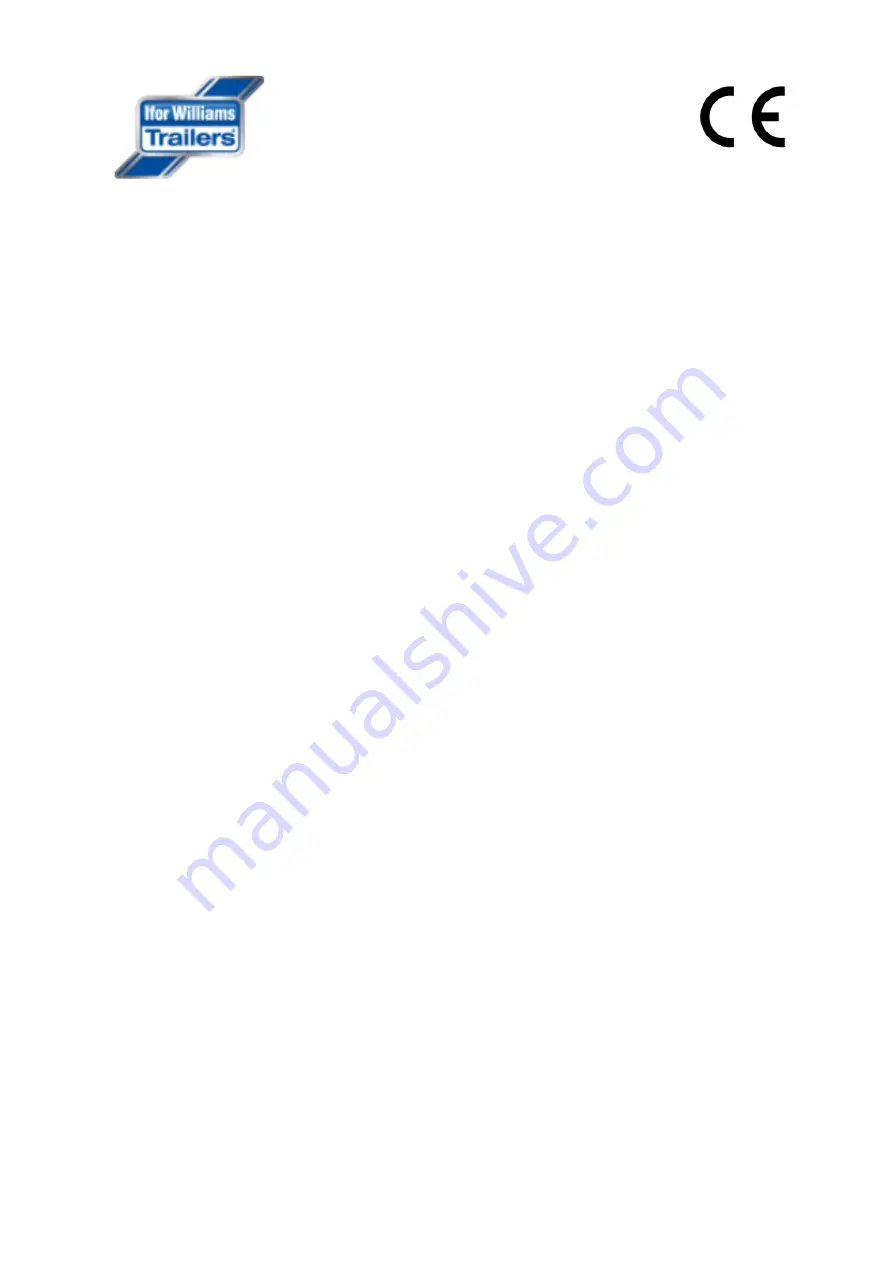
Page | 22
3.5.2
–
Use of Loading Skids
Extreme care should be exercised when using loading skids on Tipping Trailers
If using a winch to load a vehicle or other rolling load it is essential to establish a safe working area of
at least 6m beyond the ends of the skids and at no time must anyone stand in this area while
winching is taking place
•
Carry out loading and unloading on level, firm ground.
•
Always use the prop stands provided.
•
Have an assistant on hand to guide you.
•
Ensure that the skids are positioned correctly, with the lower ends on firm, level
ground, parallel with the trailer and in line with the centre of the tyres of the vehicle to
be loaded/unloaded and that the skid top angles are in contact with the trailer rear
cross-member over their full width.
•
Any assistant should keep well clear during loading/unloading.
•
Take your time and constantly check that the vehicle is correctly positioned.
3.5.3
–
Replacing Skids
•
Ensure that the skid retainer clamp handle is positioned on the opposite side to the
skid you are replacing and slide the skid back into place. To prevent injury, keep
fingers and hands clear of the underside of the skid before the skid reaches the
stowage position.
•
When both skids are in place, slide the clamp handle to the central position, locate
in the receiver bracket and replace the linchpin as shown in fig 11.
3.6
–
Electric Winch
(Not available on TT2012)
The electric winch option is substantially the same as for the Tiltbed
–
covered in section 4.2.2
except that the winch is fixed in the central position and does not slide from side to side.
3.7
–
Removal and Replacement of Sideboards, Tailboard and Headboard
•
Most Ifor Williams Tipping Trailers can be stripped of sideboards, tailboard and headboard to
leave a completely flat trailer. However, the headboard should only be removed if absolutely
necessary – it is after all the last defence that prevents cargo on the load bed sliding forwards
and damaging the towing vehicle in the event of an emergency stop.
















































